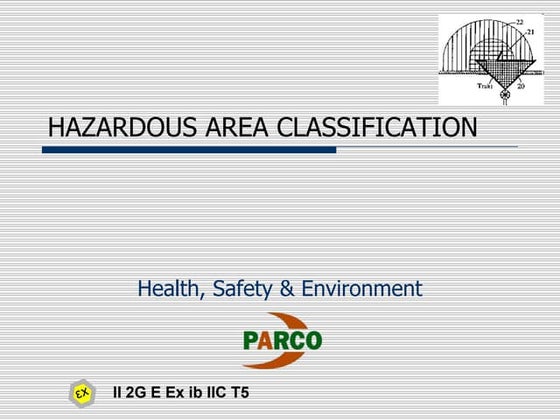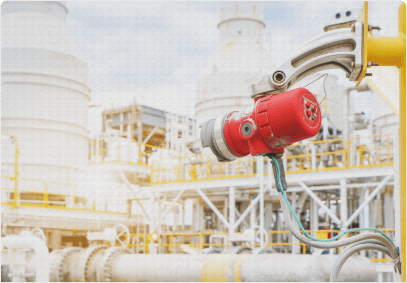What Does Roar Solutions Mean?
What Does Roar Solutions Mean?
Blog Article
The Basic Principles Of Roar Solutions
Table of ContentsWhat Does Roar Solutions Do?The Basic Principles Of Roar Solutions Roar Solutions for Beginners
In order to secure setups from a possible surge an approach of evaluating and classifying a possibly harmful location is needed. The purpose of this is to make sure the appropriate selection and installment of equipment to inevitably stop an explosion and to ensure security of life.
(https://papaly.com/categories/share?id=f67ddeb126ff42bfb724a48f0cebd961)
No devices should be mounted where the surface temperature level of the tools is higher than the ignition temperature level of the provided threat. Below are some usual dirt hazardous and their minimal ignition temperature level. Coal Dust 380C 225C Polythene 420C (thaws) Methyl Cellulose 420C 320C Starch 460C 435C Flour 490C 340C Sugar 490C 460C Grain Dirt 510C 300C Phenolic Resin 530C > 450C Aluminium 590C > 450C PVC 700C > 450C Soot 810C 570C The probability of the threat being present in a concentration high enough to cause an ignition will certainly vary from location to location.
In order to identify this danger an installation is separated right into areas of risk relying on the quantity of time the unsafe is existing. These areas are referred to as Areas. For gases and vapours and dirts and fibers there are three areas. Zone 0 Zone 20 A hazardous atmosphere is extremely likely to be present and might exist for lengthy durations of time (> 1000 hours per year) or perhaps continually Zone 1 Zone 21 A dangerous environment is possible however unlikely to be existing for long durations of time (> 10 450 C [842 F] A classification of T6 suggests the minimum ignition temperature is > 85 C [185 F] Hazardous area electrical tools maybe made for usage in greater ambient temperature levels. This would certainly indicated on the score plate e.g. EExe II C T3 Ta + 60C( This suggests at 60C ambient T3 will certainly not be gone beyond) T1 T1, T2, T3, T4, T5, T6 T2 T2, T3, T4, T5, T6 T3 T3, T4, T5, T6 T4 T4, T5, T6 T5 T5, T6 T6 T6 A T Class ranking of T1 suggests the optimum surface area temperature level generated by the tool at 40 C is 450 C. Presuming the connected T Course and Temperature score for the devices are suitable for the area, you can constantly make use of an instrument with a much more stringent Division ranking than needed for the location. There isn't a clear response to this inquiry sadly. It actually does depend on the sort of tools and what repair work require to be carried out. Tools with certain test treatments that can not be performed in the area in order to achieve/maintain 3rd party rating. Need to return to the manufacturing facility if it is before the tools's service. Area Repair Service By Authorised Employee: Complicated screening may not be needed nonetheless certain procedures might need to be adhered to in order for the tools to maintain its 3rd party rating. Authorised employees should be employed to do the work properly Repair service should be a like for like replacement. New component should be taken into consideration as a straight substitute needing no unique screening of the devices after the repair service is complete. Each piece of tools with an unsafe ranking must be examined independently. These are outlined at a high level listed below, however for even more thorough details, please refer straight to the guidelines.
The Buzz on Roar Solutions
The equipment register is a detailed database of tools records that consists of a minimum collection of areas to identify each item's area, technological criteria, Ex lover classification, age, and environmental information. This information is critical for tracking and handling the tools effectively within harmful areas. In contrast, for routine or RBI tasting inspections, the grade will be a combination of In-depth and Close examinations. The ratio of Comprehensive to Close evaluations will certainly be identified by the Devices Danger, which is evaluated based on ignition danger (the chance of a resource of ignition versus the likelihood of a combustible environment )and the harmful area classification
( Zone 0, 1, or 2). This variant will likewise affect the resourcing requirements for work preparation. As soon as Lots are specified, you can develop sampling plans based upon the sample size of each Lot, which describes the number of random tools products to be checked. To figure out the needed example size, 2 aspects need to be reviewed: the size of the Whole lot and the category of inspection, which indicates the level of effort that should be applied( lowered, typical, or boosted )to the assessment of the Whole lot. By combining the category of evaluation with the Whole lot dimension, you can after that establish the ideal being rejected criteria for a sample, meaning the permitted variety of malfunctioning products discovered within that sample. For more details on this process, please describe the Energy Institute Guidelines. The IEC 60079 common recommends that the optimum period between inspections ought to not exceed three years. EEHA evaluations will also be performed beyond RBI projects as part of set up maintenance and equipment overhauls or repairs. These examinations can be credited toward the RBI example sizes within the Look At This affected Lots. EEHA examinations are carried out to recognize faults in electric equipment. A weighted racking up system is vital, as a solitary item of tools may have numerous mistakes, each with differing degrees of ignition danger. If the consolidated score of both inspections is much less than twice the mistake score, the Whole lot is considered acceptable. If the Lot is still taken into consideration undesirable, it has to go through a complete evaluation or validation, which might cause more stringent inspection protocols. Accepted Lot: The causes of any type of faults are identified. If a typical failure setting is discovered, added equipment may call for maintenance. Mistakes are identified by intensity( Safety, Stability, Home cleaning ), ensuring that immediate problems are examined and addressed quickly to alleviate any kind of effect on safety and security or procedures. The EEHA data source should track and tape-record the lifecycle of faults in addition to the rehabilitative activities taken. Implementing a durable Risk-Based Assessment( RBI )method is crucial for making certain conformity and security in taking care of Electric Tools in Hazardous Areas( EEHA) (eeha courses). Automated Fault Rating and Lifecycle Management: Easily take care of mistakes and track their lifecycle to boost examination precision. The intro of this assistance for risk-based assessment even more strengthens Inspectivity's setting as a best-in-class remedy for regulatory compliance, along with for any asset-centric evaluation usage instance. If you have an interest in finding out more, we invite you to request a presentation and discover just how our option can transform your EEHA monitoring procedures.
Examine This Report on Roar Solutions

In terms of explosive risk, a harmful area is an atmosphere in which an explosive environment is present (or may be anticipated to be existing) in quantities that require special preventative measures for the building, setup and use of devices. eeha. In this post we explore the difficulties dealt with in the workplace, the risk control actions, and the called for competencies to function securely
It is an effect of modern-day life that we manufacture, keep or handle a series of gases or liquids that are deemed combustible, and a range of dusts that are deemed flammable. These materials can, in specific conditions, develop eruptive ambiences and these can have major and awful repercussions. A lot of us are acquainted with the fire triangle get rid of any type of one of the 3 aspects and the fire can not happen, but what does this mean in the context of unsafe areas? When damaging this down right into its most basic terms it is basically: a combination of a particular amount of release or leakage of a particular substance or material, blending with ambient oxygen, and the visibility of a source of ignition.
In many instances, we can do little regarding the levels of oxygen in the air, yet we can have considerable impact on resources of ignition, for instance electric equipment. Hazardous areas are documented on the harmful location category illustration and are determined on-site by the triangular "EX LOVER" indicator. Here, among other crucial details, areas are divided into three kinds depending upon the danger, the likelihood and period that an explosive atmosphere will certainly exist; Area 0 or 20 is regarded one of the most harmful and Zone 2 or 22 is deemed the least.
Report this page